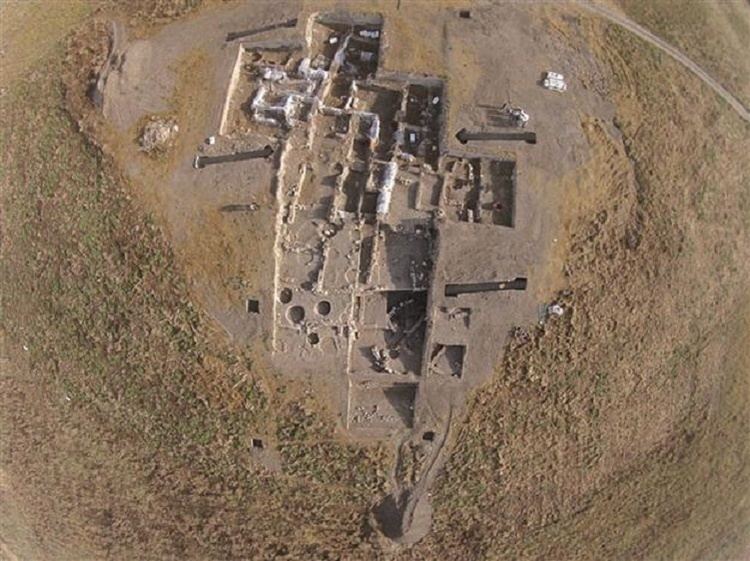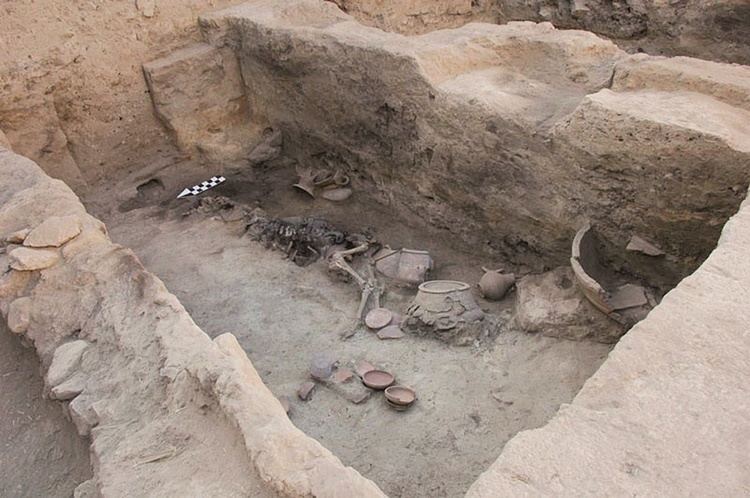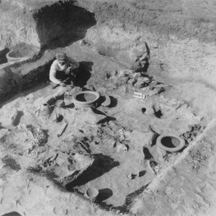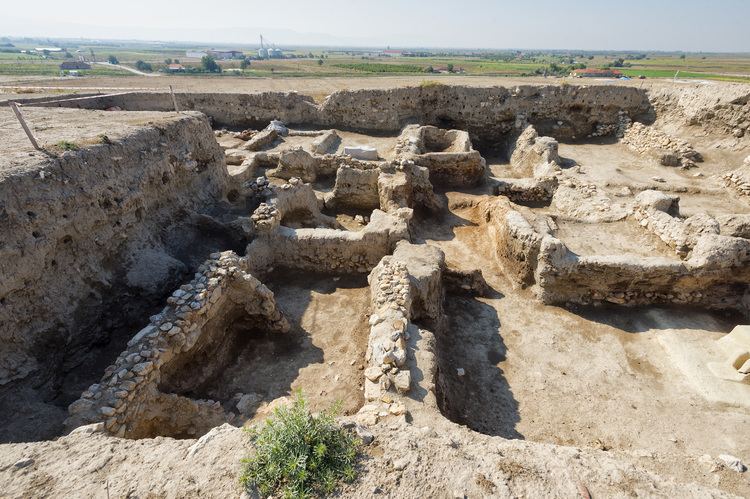 | ||
Beycesultan ([ˈbejdʒe sulˈtan]) is an archaeological site in western Anatolia, located about 5 km southwest of the modern-day city of Çivril in the Denizli Province of Turkey. It lies in a bend of an old tributary of Büyük Menderes River (Maeander River),
Contents

History

Beycesultan was occupied beginning in the Late Chalcolithic period. This large mound is almost 1 km in diameter and 25 m high.

The settlement increased in size and prominence through the 3rd millennium, with notable religious and civil buildings. Development peaked early in the 2nd millennium with the construction of a massive palace and associated structures. The palace was abandoned and then destroyed circa 1700 BC. To this point, the orientation of Beycesultan was strongly influenced from the west, mainly the Aegean and Crete.

After a few centuries of semi-abandonment, Beycesultan began to rise again, this time more influenced by the Hittite regions of Anatolia. Though smaller than the earlier city, the site was of impressive size. This second flowering of Beycesultan was completely destroyed circa 1200 BC as were many locations in Anatolia at that time.
The site was also the occupied, to a lesser scale, in the Byzantine, Seljuk and Ottoman period. It has been hypothesized that is the Byzantine town and bishopry "Ilouza" (Ιλούζα), and possibly the Hittite Wilusa.
Archaeology
The site of Beycesultan consists of two mounds, divided by the old trading road. The maximum height of 25 meters is at the western mound and the entire site is around a kilometer in diameter.
In early 1950s James Mellaart discovered specimens of "champagne-glass" style pottery in a Late Bronze Age context near the site. A search identified the höyük (mound) of Beycesultan upstream of the Menderes river.
Seton Lloyd, along with James Mellaart, excavated Beycesultan on behalf of the British Institute of Archaeology at Ankara for six seasons from 1954 to 1959 with each dig lasting around two months.
A renewed survey of the site and its region was conducted from 2002 to 2007 by Eşref Abay of the Ege University and new excavations at the site conducted under his direction beginning in 2007. Work continues to the present in conjunction with Adnan Menderes University.
While no epigraphic material has been found as yet, a few seals have been recovered.
The early excavators reported "a row of small houses that had been destroyed by fire", with the champagne-glass pottery. There was also a palace "whose plan suggested ... Knossos", which was cleared out before its destruction:
At one entrance of the palace was a kind of bathroom, where visitors washed themselves before making their bows at court. One odd feature of the inner chambers: floors raised about a yard above the ground. Beneath the floors were small passages. They suggest air ducts of a heating system, but nothing of the sort is known to have existed until 1,000 years later.Outside the palace,
Most interesting was a row of little shops. One was a Bronze Age pub with sunken vats for the wine supply and a lavish supply of glasses for serving the customers. It also had knucklebones, a gambling game that did the duty of a modern bar's chuck-a-luck.